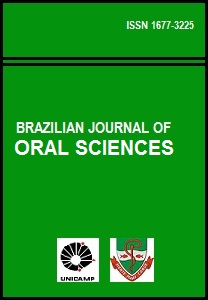Abstract
Aim: To investigate the influence of deproteinization and moisture condition (wet vs. dry) on the bond strength and micromorphology of resin-dentin bonding interfaces. Methods: Dentin surfaces were etched with 37% phosphoric acid for 15 s and rinsed with water. Four groups (n = 10) were tested: WET: dentin was left visibly moist; DRY: dentin was dried with compressed air; WET-D: dentin was deproteinized for 60 s using 10% NaOCl solution and left moist; DRY-D: dentin was deproteinized and dried. Prime&Bond 2.1 adhesive was applied and the teeth were restored with composite resin. Microtensile test was carried out after 24 h, and failure modes classified under magnification. Data were subjected to two-way ANOVA and Tukey’s test (P < 0.05). The bonding micromorphology was analyzed by confocal laser scanning microscopy. Results: The group DRY showed significantly lower bond strength (P < 0.05) than the other groups, which were similar to each other (P > 0.05). Adhesive failures were predominant. Analysis of micromorphology showed formation of a collagen-resin hybrid layer only for the non-deproteinized groups. Adhesive penetration into the dentinal tubules was deeper for the DRY-D compared to the WETD group. Conclusion: The bond strength was not dependent on the moisture condition and a more homogeneous hybridization was obtained when dentin was deproteinizedThe Brazilian Journal of Oral Sciences uses the Creative Commons license (CC), thus preserving the integrity of the articles in an open access environment.
Downloads
Download data is not yet available.

